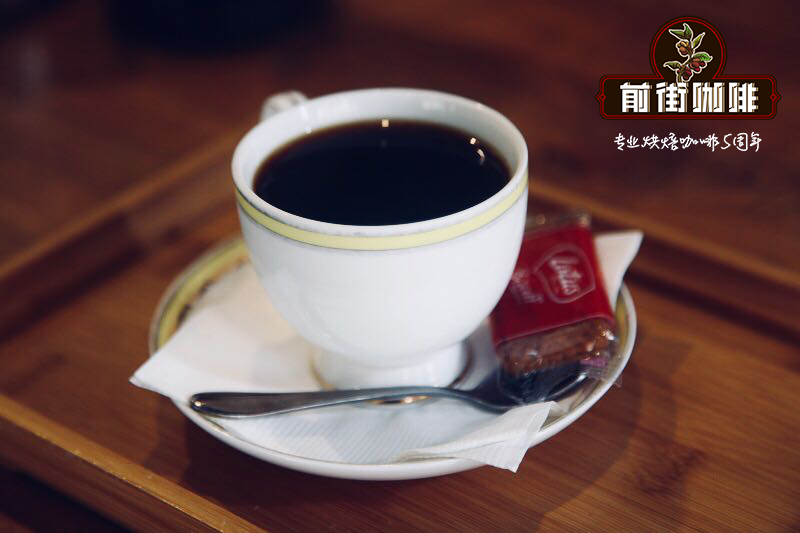How much do you know about old coffee? What's the difference between old manning and old Java?

For information, please follow the coffee workshop (Wechat official account cafe_style)
Old coffee. Maybe you have heard that it doesn't matter if the coffee bean has been kept for a long time, it will become old coffee and taste better. In fact, this is a rather irresponsible saying that beans will rot after they have been kept for a long time, changing from fresh cyan to white, then to yellow, becoming dull and even worms. Like aged wine, raw beans must be properly processed and stored for a long time before they can be called "aged coffee". Java coffee is produced on the Indonesian island of Java and belongs to Arabica coffee. After baking, the bitter taste is extremely strong and the aroma is very light, without sour taste. The bitterness and mellowness of Java coffee, coupled with the sweetness of chocolate syrup, make Java coffee more mellow and palatable and very popular with women!
Among the Asian coffee-producing countries, Indonesia is a very noteworthy one. Indonesia is an island country in the Indian Ocean.
The islands are located on both sides of the equatorial line, and three of them, Java, Sumatra and Sulawesi, produce the most important coffee in the world. In the mid-17th century, the Dutch brought coffee trees to Ceylon (Sri Lanka) and Java, Indonesia. In the 18th century, Indonesia became a major producer of coffee, and almost all of its high-quality Arabica coffee was supplied to Europe. But by the 19th century, coffee rust, which appeared in Ceylon in 1869, also affected Indonesia. By 1877, most of the coffee fields on the Indonesian islands had been damaged by rust, and the Dutch had to import other coffee varieties from Africa, namely Romsda coffee. It is more resistant to diseases and insect pests, but its quality is inferior. About 90 per cent of Indonesian coffee is Romda beans, about 6.8 million bags a year, and less than 10 per cent of beans are Arabica coffee.
Coffee produced in Indonesia generally does not have the name "Indonesia", but directly bears the name of the island, such as Java, Sumatra and so on. Java produces only a small amount of Arabica beans, most of which were imported from Africa after the rust disaster. This coffee has a strong bitter taste after roasting, but the aroma is extremely light. Although the acidity is low and the taste is delicate, it is rarely used for direct drinking. It is often used to mix mixed coffee or to make instant coffee.
The aged Agedmandheling is as sweet as honey. The successful old bean has worn away Manning's inelegant sour taste. The sour ingredients are ripe and converted to sugar, making the coffee more round and sweeter to drink. Manning is like a coffee zombie in the old age of failure, and the taste is hard to taste.
Manning Coffee-Features
Manning coffee has a very strong flavor, fragrant, bitter, mellow, with a little sweetness. Most coffee lovers drink on their own, but it is also an indispensable variety for blending coffee.
As the Mantenin coffee beans themselves do not have sour characteristics, so the general special blending methods are based on Mantenin coffee beans, in the long-term heat preservation or preparation of iced coffee, there is no unpleasant sour taste.
After baking, the beans are very large, and the raw beans are brown or dark green with a special aroma like caramel and a mellow taste.
Important Notice :
前街咖啡 FrontStreet Coffee has moved to new addredd:
FrontStreet Coffee Address: 315,Donghua East Road,GuangZhou
Tel:020 38364473
- Prev

Is Blue Mountain Coffee really the best in the world? How much is the authentic Blue Mountain coffee?
For information, please follow the coffee workshop (Wechat official account cafe_style) Blue Mountain Coffee, which is made by brewing coffee beans from the Blue Mountains of Jamaica. According to the grade, it is divided into Jamaica Blue Mountain Coffee and Jamaican Alpine Coffee. The Blue Mountains are located in the east of the island of Jamaica (Jamaica), because the mountain is surrounded by the Caribbean Sea and the sun shines directly on clear days.
- Next

The origin of Bali Kopi Luwak, the world's most expensive coffee-Kopi Luwak
For information, please follow the coffee workshop (Wechat official account cafe_style) Indonesia Manning and Java coffee are famous all over the world, many people do not know that Bali itself also produces coffee. Bali coffee trees mostly grow in the north-central mountains at an altitude of 1000-2000 meters above sea level. Because the area is cool and foggy, it is suitable for coffee trees. Bali gold caffeine arises at the historic moment, with an average of 800m a year.
Related
- Does Rose Summer choose Blue, Green or Red? Detailed explanation of Rose Summer Coffee plots and Classification in Panamanian Jade Manor
- What is the difference between the origin, producing area, processing plant, cooperative and manor of coffee beans?
- How fine does the espresso powder fit? how to grind the espresso?
- Sca coffee roasting degree color card coffee roasting degree 8 roasting color values what do you mean?
- The practice of lattes: how to make lattes at home
- Introduction to Indonesian Fine Coffee beans-- Java Coffee producing area of Indonesian Arabica Coffee
- How much will the flavor of light and medium roasted rose summer be expressed? What baking level is rose summer suitable for?
- Introduction to the characteristics of washing, sun-drying or wet-planing coffee commonly used in Mantenin, Indonesia
- Price characteristics of Arabica Coffee Bean Starbucks introduction to Manning Coffee Bean Taste producing area Variety Manor
- What is the authentic Yega flavor? What are the flavor characteristics of the really excellent Yejasuffi coffee beans?

